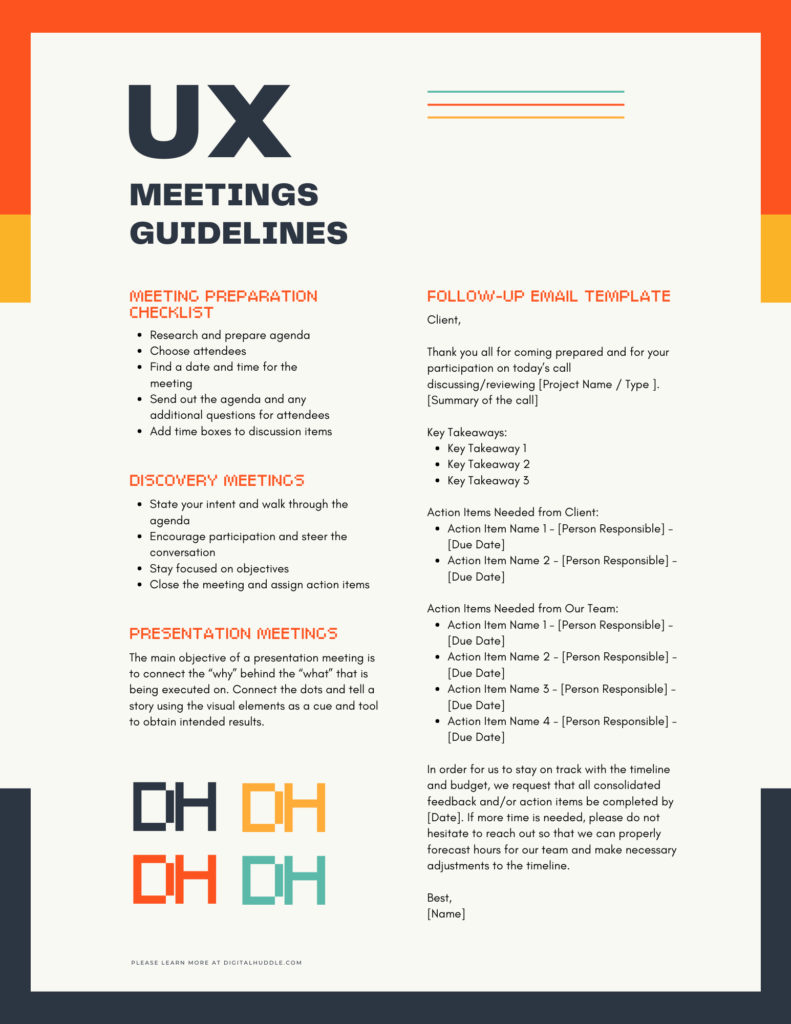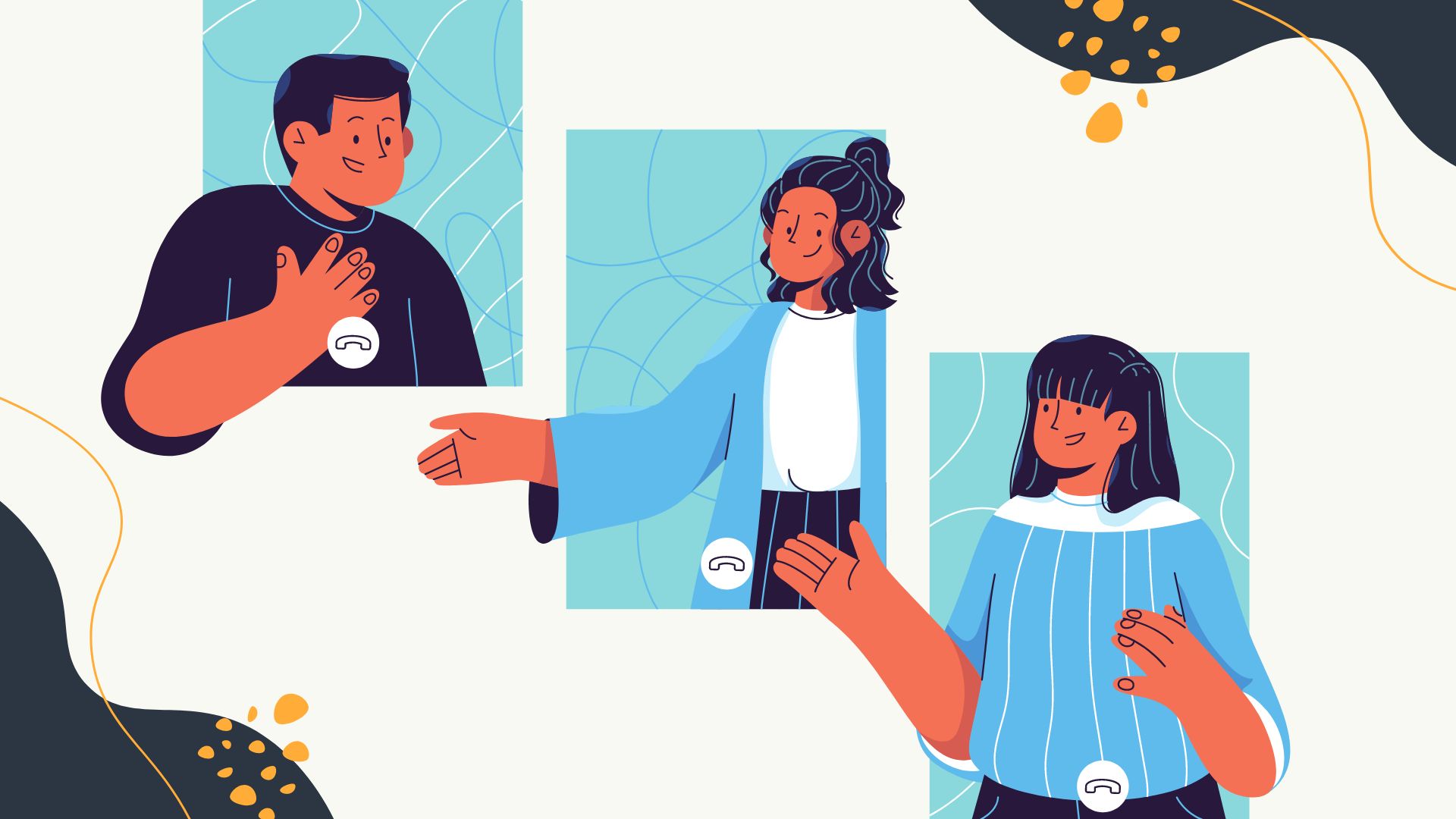How To Lead Highly Effective UX Design Meetings
Uncover the needs of the client and intended audience by preparing for, running, and following through on the most powerful UX Design tool there is—a meeting.
By definition, UX Design is the design discipline that centers around creating clear and intuitive user experiences for an individual within a defined space or environment. Among the most powerful tools a UX Designer can leverage are meetings and interviews to uncover the needs of their clients and the intended audience.
We all have mixed feelings about meetings. No one likes to spend their time unnecessarily and have their day eaten up. The truth is that by reshaping the way we run meetings, we can ensure that each one is efficient and productive to maximize everyone’s time on the call effectively. They also present opportunities to gain a unique perspective from the people actually using the product. It’s also possible to gather the information we wouldn’t be able to gain from just reviewing the product through our own lens.
Every successful meeting has a couple of things in common—a clear agenda and set expectations of the intended outcome. There are various meeting types that a UX Designer must take the lead on. We’ll cover two meeting types: discovery discussions and presenting our work.
Meeting Preparation
It’s important to always come prepared for meetings so that you feel comfortable leading the discussion. Unfortunately, meeting preparation is often overlooked and not given proper attention. While you research and dive into the background of your client or project, keep an active list of questions that you can use to formulate your meeting agenda. Your questions should spark conversation, so be sure they warrant more than just a yes or no answer from the group or person you’re meeting with. Based on your research and the goal of the meeting, you’ll then need to select the individuals that should attend the meeting. Attendees may include key stakeholders, decision-makers, marketing or sales team members, etc.
Here’s a reminder that the meeting agenda is not your list of questions. Instead, it’s a condensed outline of what topics you plan to discuss. Don’t be afraid to attach additional notes or questions to your meeting agenda if what you’re looking to uncover may take some extra preparation from the client or if you’re looking for complex data.
A meeting preparation checklist should contain the following actions:
- Research and prepare the agenda.
- Choose the attendees.
- Find a date and time for the meeting.
- Send out the agenda and any additional questions for attendees.
- Add time boxes to discussion items.
Discovery Meetings
The key to a successful discovery meeting is participation. As a UX Designer, your role is to lead the conversation and promote participation from all attendees. At the start of the meeting, you should run through the agenda, restate the intent of the meeting, and set goals for what you’re looking to accomplish.
To get the group into the flow, you can start with questions that are low-hanging fruits. Ask the client or stakeholder to walk through the current state of their user’s experience, and talk about what they believe they’re doing well and what they think isn’t working. This will get the conversation started and create a bridge to move into harder questions, such as what the ideal state that they’d like to move toward is. As the leader of the meeting, don’t be afraid to call on specific individuals to ensure you’re getting a 360-degree view and not just the perspective of one person. Be prepared to redirect the conversation if it starts to get off topic. It’s okay to say, “Let’s take a pause,” or “Let’s make a note on that to return to it in another meeting and shift our attention to something else.” As the conversation progresses, allow ample time at the backend of the meeting to circle back and create objectives, establish KPIs, and set goals that you can use to measure the project’s success. These items will lead you to the last section of the meeting, where you establish the next steps, timeline, and action items.
Here’s how to take the lead in discovery:
- State your intent and walk through the agenda.
- Encourage participation and steer the conversation.
- Stay focused on objectives.
- Close the meeting and assign action items.
Presentation Meetings
The main objective of a presentation meeting is to connect the “why” behind the “what” of the executed work. As you run through your work, pay close attention to the goals and strategy developed in the discovery phase. Because this is a visual presentation, you shouldn’t simply talk about what is on the page. Connect the dots and tell a story using the visual elements as a cue and tool to obtain intended results. Once you’ve completed the presentation portion of the meeting, you’ll then move on to the feedback stage.
A transition needs to happen within the feedback portion of the meeting. Much like a discovery meeting, you need to encourage participation and lead the discussion to achieve actionable feedback. Keep the focus objective. Here are a few examples of how to start that conversation:
- “Is there anything that really resonated with you?” or “Is there anything that you feel missed the mark?”
- “Does this align with the strategy developed through our collaboration on previous meetings?”
- “Do you have questions about particular elements or sections based on functionality or intended use?”
Again, it’s your role as the UX Designer to ask questions that are not open-ended and not actionable. Be specific and strategic with your approach to allow for productive conversation. Questions you should avoid asking include:
- “What do you think?”
- “How do you feel about it?”
- “Is this what you were expecting?”
As always, be clear about the next steps and identify anything you may need from their team to continue progress on the project.
Meeting Conclusions and Follow-Ups
On the backside of meetings, allow yourself ample time to collect your notes and create a follow-up email restating what you accomplished on the call, the action items needed, and a timeline around the next steps. Below is a format that you can use as a follow-up email template.
Client,
Thank you all for coming prepared and for your participation on today’s call discussing/reviewing [Project Name / Type]. [Summary of the call]
Key Takeaways:
- Key Takeaway 1
- Key Takeaway 2
- Key Takeaway 3
Action Items Needed from Client:
- Action Item Name 1 – [Person Responsible] – [Due Date]
- Action Item Name 2 – [Person Responsible] – [Due Date]
Action Items Needed from Our Team:
- Action Item Name 1 – [Person Responsible] – [Due Date]
- Action Item Name 2 – [Person Responsible] – [Due Date]
- Action Item Name 3 – [Person Responsible] – [Due Date]
- Action Item Name 4 – [Person Responsible] – [Due Date]
In order for us to stay on track with the timeline and budget, we request that all consolidated feedback and/or action items be completed by [Date]. If more time is needed, please do not hesitate to reach out so that we can properly forecast hours for our team and make necessary adjustments to the timeline.
Best,
[Name]
At the end of the day, a meeting is just a formal version of a conversation. Keep that in mind as you prepare for and lead your next meeting. You’ll find that your confidence will grow. That confidence will build trust with your audience and encourage them to collaborate instead of offering up critiques, which is the ultimate goal of any UX Designer.

